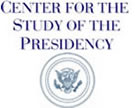US naval officer and strategist Alfred Thayer Mahanís advice in 1890 for the US to push outwards to rule the oceans is still heeded by US maritime forces in the present day. The USS Nimitz aircraft carrier, standing 23 stories high and 333 metres long with 5,000 personnel on board, arrived in Sri Lanka in October this year after 32 years since the last arrival of a US aircraft carrier. Aircraft carriers are sea-faring air bases equivalent to floating geographical land masses with significant firepower which have been proven as key strategic war machines in the recent past.
The visit of the USS Nimitz is a clear indication of the military and economic might that the US projects through floating bases, not only in the Indian Ocean Region (IOR) but globally. Floating bases are indicative of the US world order – one that is predominantly unilateral, save for ‘collective security’ partnerships and one that seeks hegemony.
Nevertheless, the presence of USS Nimitz in the IOR intends to symbolise the strong cooperation between the US and Sri Lanka during the Sirisena regime. Back in 1985, the US aircraft carrier visit would have raised concerns for Sri Lanka’s immediate neighbour, India. However, today, the US and India enjoy a different relationship than in the past. The US has clearly cemented strong ‘collective security’ relations with India, Japan, and Australia.
In this context, countries with a geostrategic advantage such as Sri Lanka are seen as ideal sites to further strengthen these lateral ties. From 2010 onwards, there have been more than 200 foreign naval visits to Sri Lanka, including India’s INS Vikramaditya, another aircraft carrier that visited the Colombo Port in 2016. Sri Lanka strives to balance all major powers’ interests in the country and thus accommodate these war ships as friendship visits. The prevalent counter-argument is that some major powers, most notably China, are aggressively and one-sidedly pursuing their own self-interest through setting up military bases in the IOR. However, one could also contend that aircraft carriers as floating bases (such as the US’) in the deep oceans are trying to showcase and achieve a similar military strategy and projection of power.
President Sirisena’s government is enacting this balancing act for Sri Lanka and creating equidistant foreign relations with the US, India, and China. In the region, India has also engaged in joint military exercises, the most recent being ‘Mitra Shakti 2017’ with Sri Lanka in October. According to the Indian Express, the joint military exercise was India’s response to China’s growing influence in South Asia and the IOR. However,this author’s opinion is that the article is speculative since the military exercise clearly falls short of limiting China’s growing power in the region. In this vein, many speculative media stories will raise similar questions with regard to Sri Lanka’s relationship with its neighbour, India.
President Trump visited China against the backdrop of all these geopolitical events in the IOR. Chinese leader Xi Jinping has arguably presided over more domestic stability and economic prosperity in his country than Angela Merkel, Theresa May, Vladimir Putin, and Trump combined. President Xi, in his speech to the 19th National Congress in October, highlighted the founding aspirations of Chinese communist values. This included moving 80 million people from rural to urban areas, boosting the country’s GDP from 54 trillion to 80 trillion yuan, projecting China as the world’s second largest economy, and contributing to 30 per cent of global economic growth in a span of only five years. While propelling innovation and scientific advancement, China has also made more than 1500 reforms of a socialist nature to pursue modernisation, including fighting corruption. On the latter point, President Xi remarked “We have taken out tigers, swatted flies and hunted down foxes,” leaving no space for corruption.
At the 19th National Congress, China’s external approach to the world was discussed. President Xi’s gigantic One Belt, One Road (OBOR) project has already altered the natural geography in many parts of the world. This includes the China-Pakistan Economic Corridor (CPEC), connecting to Gwadar Port as well as Hambantota Port, which will change trading patterns in the region. The Asia Infrastructure Investment Bank (AIIB) and the Silk Road Fund are other economic initiatives working towards funding a new economic order. Thus, it is apparent that China has charted its own course in creating an Asian-led new world order that is geo-politically, economically and militarily in direct contravention of the US’ world order, and that renounces the perceived Western view.
Today, China projects itself as a proud country, at a time when socialists around the world are celebrating the centennial of the great October Revolution of 1917, spearheaded by Vladimir Ilyich Ulyanov, better known as Lenin. From its long history of struggle, China has set itself in the right direction to alter the existing world order (the one contravened by the US), by pursuing a strategy that is rooted in economic and geopolitical prowess. Much like the US, China’s power projections are articulated through the amassing of land-bases. Yet, China’s world vision is far broader, in that it is striving to combine its economic and military might with its socialist-political orientation as well as the geo-strategic interests of developing countries.
***Views expressed here are personal and do not reflect those of the Government of Sri Lanka or the Institute of National Security Studies (INSS).
**Asanga Abeyagoonasekera, Director General, Institute of National Security Studies (INSS), Sri Lanka




